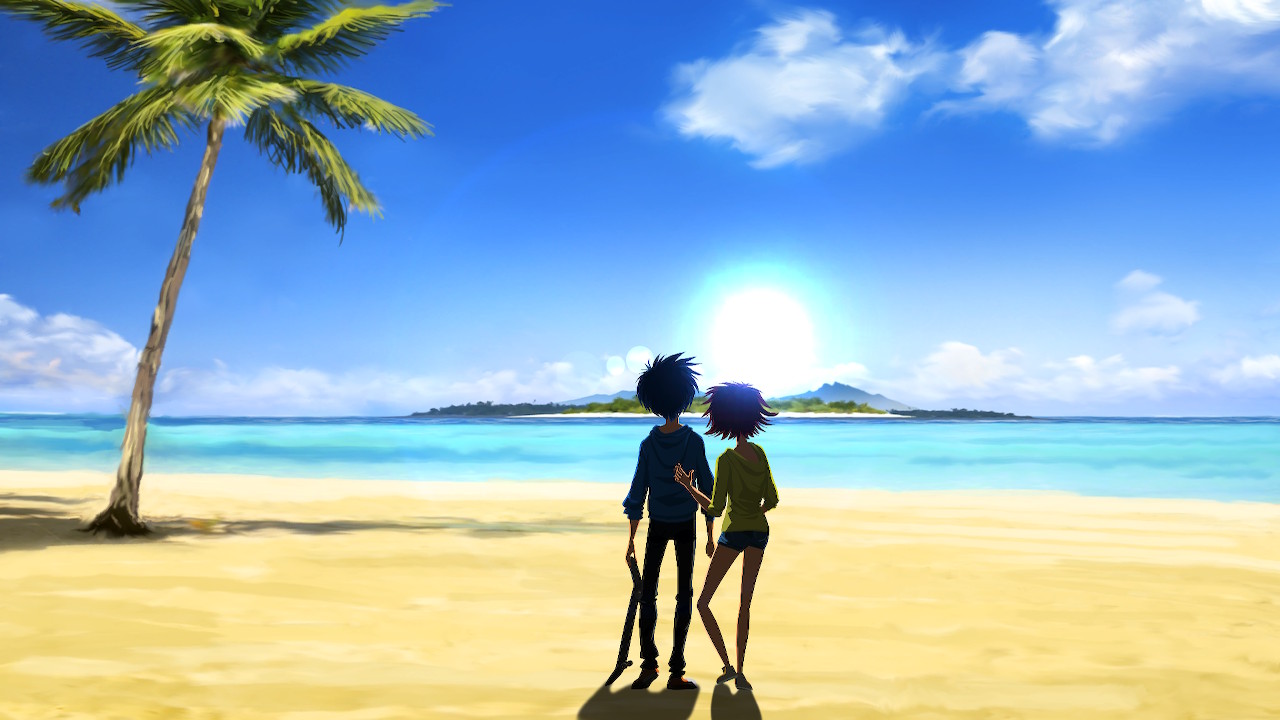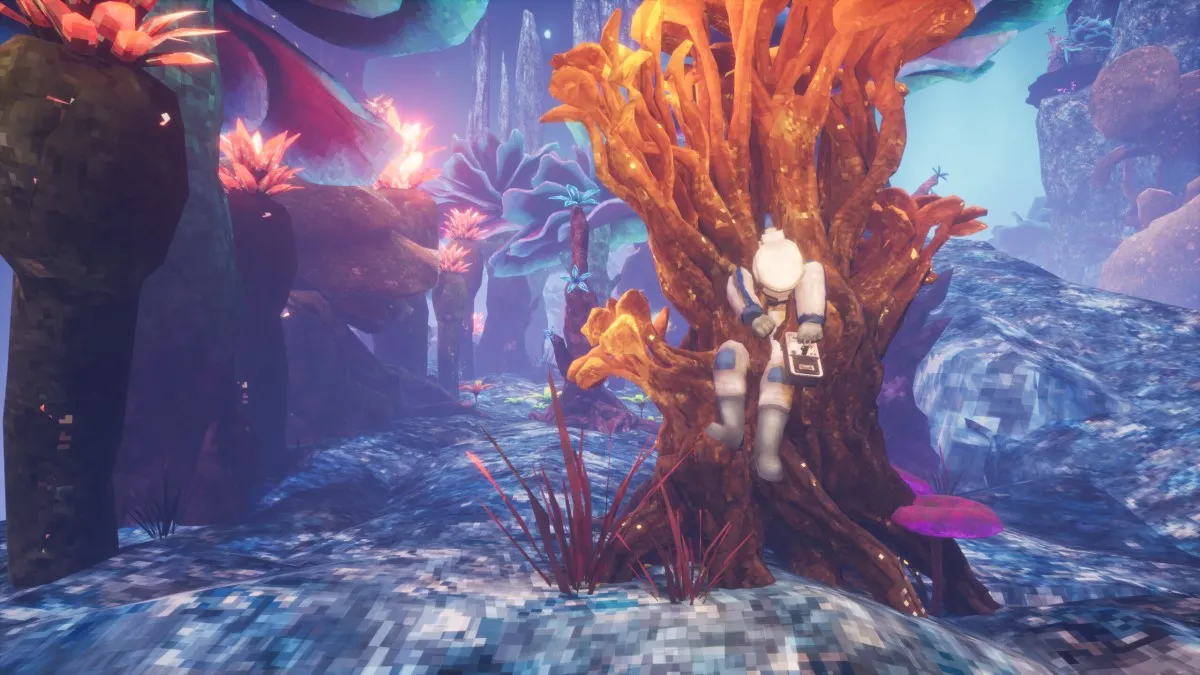So long, Space Cowboy
The video game industry has grown well beyond the concept of score chasing and arcade action. We live in a time where one can make a game with virtually any concept and imbue it with an emotional core. This medium is beautiful, chaotic, wild and always imaginative.
Emotion can only take you so far, though. What happens when you take a depressing subject like cancer and marry it with rhythm and twitch-based action? Obviously, cancer isn’t fun, but I don’t think Lost in Harmony was trying to mirror how devastatingly sad cancer can be.

Lost in Harmony (iOS, Android, PC, Switch [Reviewed])
Developer: Digixart
Publisher: Plug In Digital, Playdius Entertainment, Digixart Entertainment
Released: January 21, 2016 (iOS, Android), June 21, 2018 (PC, Switch)
MSRP: Free (iOS, Android), $6.99 (PC, Switch)
Lost in Harmony centers on a boy named Kaito dealing with the fallout of learning that his best friend, a girl named Aya, is suffering from an illness. After helping her reflect on the good memories in their life each day, Kaito drifts off to sleep and envisions the two of them skateboarding away from weird creatures while listening to remixes of classical music. As the plot unfolds, Kaito begins to understand Aya is probably not going to make it and as he learns more about the severity of her condition, the intensity of each dream sequence intensifies.
Much like how life threw Kaito a curveball, Lost in Harmony thrusts players immediately into the action and expects them to learn the game from hands-on play. After a few minutes, you’ll come to understand that Lost in Harmony is mainly a rhythm game with shades of an auto-runner. One moment you’ll be tapping buttons to the beat of the music, complete with Guitar Hero-esque scrolling, the next you’ll be jumping over obstacles like a game of Temple Run.
I’m truly kind of shocked how many different mechanics the game packs into its first level without even a text explanation of what is going on. Without prior experience with gaming, I wouldn’t even understand the concept of pressing buttons to a beat or dodging obstacles. Lost in Harmony just cold opens and expects you to deal with it.
While it might be easy enough to come to terms with the basic idea of Lost in Harmony, the real problem lies in its execution. The controls are decent for slow-moving segments, but not refined enough for when the action starts to ramp up. This might have more to do with the lackluster feedback the game gives the player, since colliding with obstacles is hard to understand and the general perspective of the camera makes judging distance a pain.
For the majority of segments, your character is on a flat plane and you only need to position him to properly dodge oncoming objects. It doesn’t help that the camera is looking behind your character, creating instances where he obscures objects coming up on his rear. Some segments are also curved and sloped, which requires constant babying of the joystick to remain in a straight line. It is incredibly aggravating but turns into outright tedium when you need to juggle that with timing button presses.
The transitions between button timing and regular platforming are a total nightmare. You can’t jump when the Guitar Hero-esque meter appears on screen, so if an object you normally can jump over appears in front of you and your brain hasn’t switched over to dodge mode, you’ll end up pressing jump, colliding with the object, mistiming a button press, and losing double points.

Failing a level, though, is oddly hard to do. You need to fill your percentage meter to 50% to pass each stage and you’ll automatically fill most of that up by doing nothing. Hitting obstacles or mistiming button presses will cause a drop in your meter, but collecting stardust and hitting buttons on time will see your percentage increase. There are also bonus orbs that automatically fill your meter by 10% (three are in each level), meaning you can just plow through tougher spots and then grab these orbs, negating all strategy the game demands you use.
Being a port of a mobile game, Lost in Harmony also has touch-based control on the Switch. You can perform basically every action that the joy-con does, just with better accuracy. Movement, though, feels like a tremendous step back and amplifies the issue you’ll have with dodging obstacles.
I think most of the game’s troubles just come from its chosen art style. I don’t mind the anime characters, but the flat 2D sprites mixed with a 3D world lacks proper depth. Since you’re running at the camera and shifting in between objects, it becomes nearly impossible to figure out where Kaito is in relation to the obstacles around him.

While you might eventually adjust, the real killer is the lack of any innovation. Lost in Harmony throws all of its ideas at you within the first level and then never introduces anything new. There are certainly different backdrops, but you’ll always be collecting stardust, jumping hurdles, dodging traffic, and listening to music. Thankfully, the soundtrack in Lost in Harmony is well done. While I’m not sure I care for classical music updated to “modern” standards, the various pieces feel fairly different from their original compositions. There are also unique songs to Lost in Harmony, with a standout being a track by Wyclef Jean. It comes out of left field in correlation to the story and marks the only time I felt an actual connection to the plot dealing with Aya’s illness.
I won’t say that dealing with sickness is something gaming should avoid, but Lost in Harmony gives you no reason to truly care about its main characters. They hardly exchange words and you never get a sense of either character’s personality. For that matter, each dream sequence doesn’t even correspond to the different dialogue that Kaito exchanges with Aya. This feels like a random assortment of ideas thrown about to a classical soundtrack as an excuse to be crazy.

I just don’t understand how you go from talking about having a relapse with your illness to skateboarding through a refugee camp. In what way do those two ideas mesh together? Did these characters escape a refugee camp and are now succumbing to some unmentioned disease?
One of the more unique features on the mobile ports of Lost in Harmony was a level editor. This let you create a stage based upon whatever song you wanted to upload. It sounds like it would have added a tremendous amount of replayability, but that is not present in this Switch port (or even the PC one). There is, however, a second campaign for Lost in Harmony, featuring a robot escaping the confines of the lab he was built in.
Surprisingly, I feel this campaign works a lot better than the main one. Along with having a completely original soundtrack, the actual theme of each level directly relates to the story being told. It still suffers from all the same control and perspective problems, but at least the idea feels more fully formed. Each song is a bit shorter, too, but this means the difficulty is ramped up a degree and the fiddly controls start to grate in short order.

In the end, I don’t want to be so down on Lost in Harmony. The story is clearly heartfelt and the soundtrack is well done, but the game tries far too many things with poor execution. I get the feeling the soundtrack was conceived first before the developers decided to put a game to it. You could get the same experience by buying the soundtrack and pretending you’re pressing buttons.
With some more focus and better design, this could have been a relaxing and reflective trip about dealing with grief and loss. Instead, it just feels like an obstructive way of listening to an album.
[This review is based on a retail build of the game provided by the publisher.]





